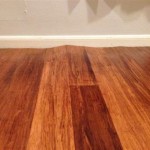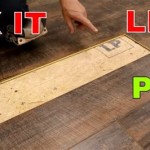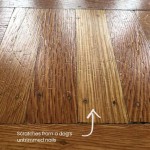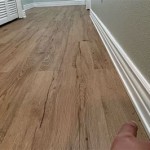Can I Put Vinyl Plank Flooring On Stairs? A Comprehensive Guide
Vinyl plank flooring has gained significant popularity as a durable and aesthetically versatile option for residential and commercial spaces. Its water resistance, ease of maintenance, and realistic wood-look appearance make it an appealing alternative to traditional hardwood or laminate flooring. However, a common question arises regarding its suitability for staircase applications: Can vinyl plank flooring be successfully installed on stairs?
The answer, in short, is yes, vinyl plank flooring can be installed on stairs. However, the process requires careful planning, meticulous execution, and the use of appropriate materials and techniques. Simply adhering vinyl planks to the stair treads and risers without proper preparation and installation methods is likely to result in premature wear, instability, and potential safety hazards. Therefore, a thorough understanding of the necessary steps and considerations is crucial for achieving a successful and long-lasting vinyl plank staircase.
Several factors contribute to the feasibility of using vinyl plank flooring on stairs. These include the type of vinyl plank, the condition of the existing staircase, the desired aesthetic outcome, and the installer's level of expertise. A project's success will depend on understanding these factors and making informed decisions every step of the way.
Key Point 1: Selecting the Right Type of Vinyl Plank Flooring
Not all vinyl plank flooring is created equal. The type of vinyl plank chosen for a staircase installation significantly impacts its durability, stability, and overall performance. There are two primary categories of vinyl plank flooring: rigid core vinyl plank (also known as SPC or WPC) and flexible vinyl plank.
Rigid core vinyl plank flooring features a dense, dimensionally stable core made from stone polymer composite (SPC) or wood plastic composite (WPC). This rigid core provides excellent resistance to indentation and warping, making it a suitable choice for high-traffic areas like staircases. The added stability of the rigid core helps to prevent issues like flexing or cracking under the weight of foot traffic, which is common on stairs.
Flexible vinyl plank flooring, on the other hand, is typically thinner and more pliable. While it can be used on stairs in some instances, it is generally not recommended for high-traffic staircases or those with underlying structural imperfections. The flexibility of this type of vinyl plank can lead to increased wear and tear, particularly at the edges and noses of the stairs. Furthermore, if the subfloor (in this case, the existing stair treads and risers) is not perfectly level or smooth, the flexible vinyl plank may conform to these imperfections, resulting in an uneven and potentially unsafe surface.
When selecting vinyl plank flooring for stairs, a high wear layer is also crucial. The wear layer is the top protective coating that shields the vinyl plank from scratches, stains, and fading. A thicker wear layer (typically 20 mil or higher) provides greater durability and longevity, especially in high-traffic areas. It is essential to consider the expected amount of foot traffic on the staircase when determining the appropriate wear layer thickness.
In addition to the core type and wear layer, it is important to consider the overall thickness of the vinyl plank. A thicker plank generally provides more cushioning and noise reduction, which can be beneficial on stairs. However, it is important to ensure that the chosen thickness does not create an uneven transition with adjacent flooring surfaces. This can be mitigated through transitioning the stairs with a flush transition or using a reducer.
Key Point 2: Preparing the Existing Staircase
Proper preparation of the existing staircase is paramount to a successful vinyl plank flooring installation. The existing stair treads and risers must be clean, level, and structurally sound before any vinyl plank is installed. Neglecting these preparatory steps can lead to a multitude of problems, including uneven surfaces, unstable flooring, and premature wear.
The first step in preparing the staircase is to thoroughly clean the existing surfaces. This involves removing any dirt, dust, debris, or adhesive residue. A vacuum cleaner with a brush attachment can be used to remove loose particles, followed by a thorough cleaning with a mild detergent and water. Stubborn adhesive residue may require the use of a solvent-based cleaner, but it is important to test the cleaner on an inconspicuous area first to ensure it does not damage the existing surface.
Once the surfaces are clean, it is essential to assess their levelness. Any unevenness in the stair treads or risers can cause the vinyl plank flooring to flex or crack under pressure. A level and a straightedge can be used to identify any high or low spots. Small imperfections can be addressed with a self-leveling compound, which is a liquid material that flows into low areas and hardens to create a smooth, level surface. Larger imperfections may require more extensive repairs, such as patching with wood filler or replacing damaged sections of the stair treads or risers.
In addition to levelness, it is important to ensure that the existing staircase is structurally sound. Any loose or wobbly stair treads or risers must be secured before installing vinyl plank flooring. This may involve tightening screws, adding shims, or reinforcing the structure with additional supports. A structurally unsound staircase can compromise the integrity of the vinyl plank flooring and create a safety hazard.
Finally, it is important to consider the existing stair nosing. The stair nosing is the rounded edge of the stair tread that overhangs the riser. In some cases, it may be necessary to remove the existing stair nosing and replace it with a new one that is compatible with the vinyl plank flooring. Alternatively, a specialized stair nosing profile can be used to cover the existing nosing and create a smooth transition with the vinyl plank flooring.
Key Point 3: Installation Techniques and Material Considerations
The installation of vinyl plank flooring on stairs requires specific techniques and materials to ensure a secure and aesthetically pleasing result. Unlike a standard floor installation, staircases present unique challenges due to their vertical orientation and the need for precise cuts and transitions.
One of the most critical aspects of a vinyl plank staircase installation is the use of a high-quality adhesive. The adhesive must be specifically designed for use with vinyl plank flooring and compatible with the substrate (i.e., the existing stair treads and risers). A strong, permanent bond is essential to prevent the vinyl plank from shifting or lifting, especially under heavy foot traffic. The adhesive should be applied evenly and according to the manufacturer's instructions.
When cutting the vinyl plank to fit the stair treads and risers, precision is paramount. A sharp utility knife or a vinyl plank cutter can be used to make clean, accurate cuts. It is important to measure each piece carefully and to account for any variations in the dimensions of the stairs. It is also a good idea to cut slightly oversized pieces and then trim them to fit, rather than cutting them too short.
The installation should begin at the top of the staircase and work downward. This allows for easier access and prevents previously installed planks from being disturbed. Each plank should be firmly pressed into the adhesive, ensuring full contact with the substrate. A roller can be used to apply even pressure and further enhance the bond.
The stair nosing presents a particular challenge during installation. As previously mentioned, a specialized stair nosing profile is often used to create a smooth and safe transition between the stair tread and the riser. This profile can be made of vinyl, metal, or wood and should be securely attached to the stair tread with adhesive and/or screws. The stair nosing should overhang the riser slightly to provide a secure grip and prevent tripping.
Another important consideration is the use of transition pieces at the top and bottom of the staircase, where the vinyl plank flooring meets other flooring surfaces. Transition pieces can be used to create a smooth and seamless transition and to protect the edges of the vinyl plank flooring from damage. These pieces can be made of various materials, such as vinyl, metal, or wood, and should be chosen to complement the overall aesthetic of the space.
Finally, it is important to allow the adhesive to fully cure before using the staircase. The curing time will vary depending on the type of adhesive used, but it is generally recommended to wait at least 24-48 hours before allowing foot traffic on the staircase. This will ensure that the adhesive has had sufficient time to bond the vinyl plank flooring to the substrate and prevent any premature shifting or lifting.
In summary, installing vinyl plank flooring on stairs is a feasible yet demanding project that necessitates meticulous planning, careful execution, and appropriate resources. By choosing the correct type of vinyl plank, thoroughly preparing the existing staircase, and employing proper installation techniques, it is possible to achieve a stunning and long-lasting vinyl plank staircase that enhances the aesthetic appeal and functionality of the space.

How To Install Vinyl Plank Flooring On Stairs In 6 Steps Inc

Pros And Cons Of Installing Vinyl Flooring On Stairs Lx Hausys

Luxury Vinyl Tile Seamless Upstairs And Downstairs Solution

Pros And Cons Of Installing Vinyl Flooring On Stairs

How To Install Vinyl Plank Flooring On Stairs

Pros And Cons Of Installing Vinyl Flooring On Stairs Lx Hausys

How To Install Vinyl Plank Flooring On Stairs In 6 Steps Inc

How To Install Vinyl Plank Flooring On Stairs In 6 Steps Inc

How To Install Spc Flooring On Stairs Protex Co Ltd

Vinyl Flooring On Stairs Complete Guide
Related Posts








